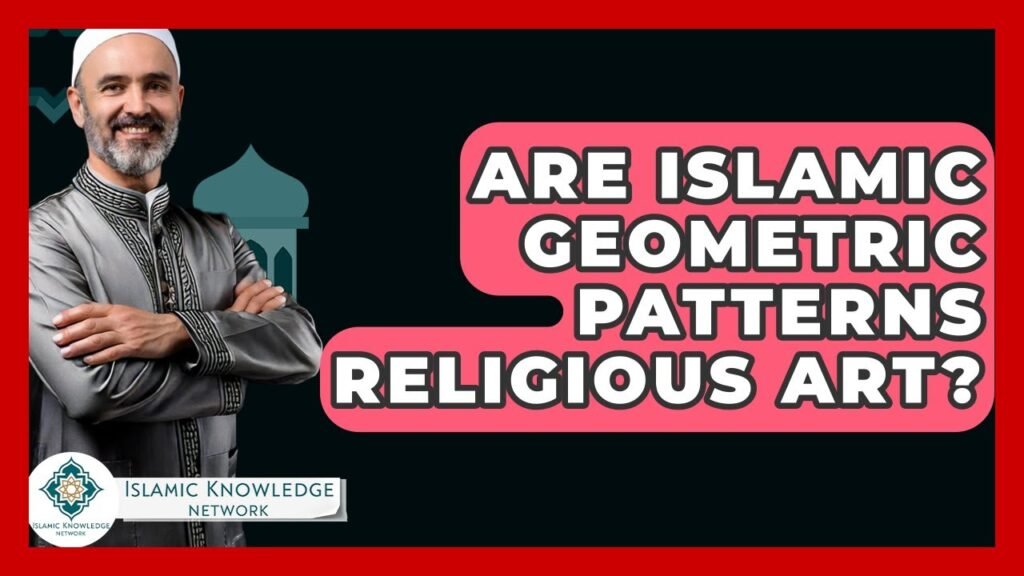You are here to read: Are Islamic Geometric Patterns Considered Religious Art? – A Thoughtfully Written Guide Offering Spiritual Wisdom and Travel Advice for Every Pilgrim who is going on holy journey of Hajj or Umrah.
Islamic geometric patterns are a captivating aspect of Islamic art, often celebrated for their intricate designs and deep symbolism. These patterns, characterized by their symmetrical shapes and repetitive motifs, have transcended mere decoration to convey spiritual meanings that resonate with the tenets of Islam. The debate surrounding whether these geometric designs should be classified as religious art invites a closer examination of their historical and cultural significance. Through their precise arrangement and mathematical precision, these patterns serve as a reminder of the harmony and order present in the universe, echoing the divine.
At Airlink Hajj and Umrah, we strive to enrich your understanding of Islamic culture and history, including the artistic expressions that accompany religious practices. Our blog provides comprehensive updates on Hajj and Umrah, ensuring that you stay informed about all aspects of these sacred journeys. By exploring the nuances of Islamic geometric patterns, we hope to illuminate their role in the broader landscape of Islamic art and spirituality, enhancing your appreciation for the beauty and complexity of Islamic traditions. Join us as we delve into the fascinating intersection of faith, art, and cultural identity.
Are Islamic Geometric Patterns Considered Religious Art?
Islamic geometric patterns are often viewed as a profound expression of faith, reflecting the intricate nature of creation in Islamic culture. These designs, characterized by interlocking shapes and symmetrical forms, hold deep spiritual significance. They are prevalent in mosques, palaces, and various forms of Islamic architecture, serving not just as decorative elements but as representations of the unity and order of the universe as perceived in Islamic teachings.
While these geometric patterns are not explicitly religious symbols, they embody the principles of Islamic art that emphasize aniconism—avoiding the use of figural imagery. This practice stems from the belief that art should serve to elevate the mind and spirit toward the divine, rather than distract from it. The repetitive nature of these patterns is thought to evoke feelings of infinity and transcendence, encouraging meditation and reflection among worshippers.
At airlinkhajjandumrah.com, we explore the rich artistic heritage of Islam. Our blog is regularly updated with the latest information on Hajj and Umrah, allowing you to immerse yourself in the spiritual journey while appreciating the cultural artistry that enhances these sacred experiences. Join us to discover more about the art and architecture that enrich your pilgrimage.
FAQ on Are Islamic Geometric Patterns Considered Religious Art?
-
What defines Islamic geometric patterns as religious art?
Islamic geometric patterns are often used in mosques and other religious structures, symbolizing spirituality and the infinite nature of Allah, which may classify them as religious art.You're at the middle of this awesome post at AirlinkHajjandUmrah.com through: Are Islamic Geometric Patterns Considered Religious Art?. Keep reading, it gets better!
-
Are geometric patterns exclusive to Islam?
While geometric patterns are a hallmark of Islamic art, similar styles can be found in various cultures around the world, though they may carry different meanings and significance. -
Do Islamic geometric patterns have specific religious meanings?
Yes, many Islamic geometric patterns are believed to convey spiritual concepts such as unity, harmony, and the universe’s complexity, often reflecting religious beliefs.
-
Can secular architecture incorporate Islamic geometric patterns?
Yes, Islamic geometric patterns can be used in secular contexts, serving as a form of decoration or cultural expression without necessarily carrying a religious connotation. - How do Islamic geometric patterns differ from other forms of Islamic art?
Islamic geometric patterns focus primarily on symmetry and mathematical precision, whereas other forms of Islamic art may include calligraphy, floral motifs, and figural representation.
That wraps up Are Islamic Geometric Patterns Considered Religious Art?. Thanks for sticking with us till here! Share this: Are Islamic Geometric Patterns Considered Religious Art? with your friends.
Check our homepage at Air Link Hajj & Umrah for more awesome updates.
Some interesting posts are: 1: Umrah Mubarak, 2: When is Umrah closed 2026?, 3: When does Umrah start after Hajj 2026?
Mushu, an experienced Saudi Arabia traveler and writer, shares insightful tips and spiritual reflections to enhance Hajj and Umrah journeys for fellow pilgrims. He has been to Makkah and Madina from 2016 to 2023 many times and his posts will reflect this.







